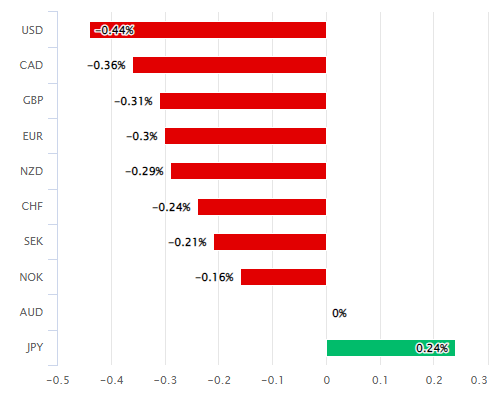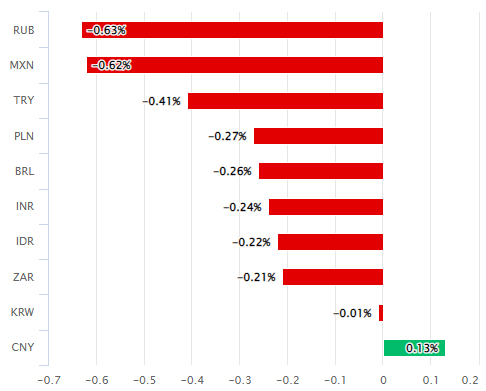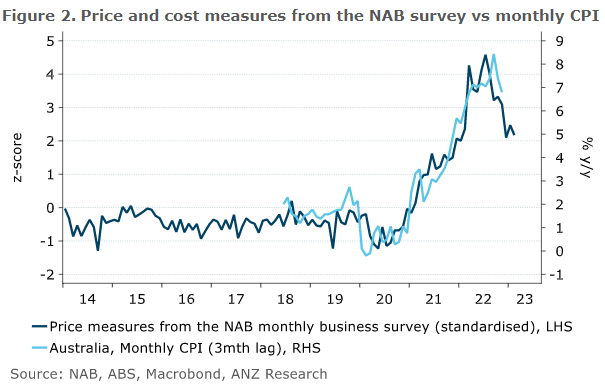Australian Dollar Loss Lifts GBP/AUD as Softer Inflation Puts RBA Pause on Table
- Written by: James Skinner
"AUD/USD is now back near 0.67. The level near 0.6640 should remain the near-term support for AUD/USD in our view" - Commonwealth Bank of Australia.
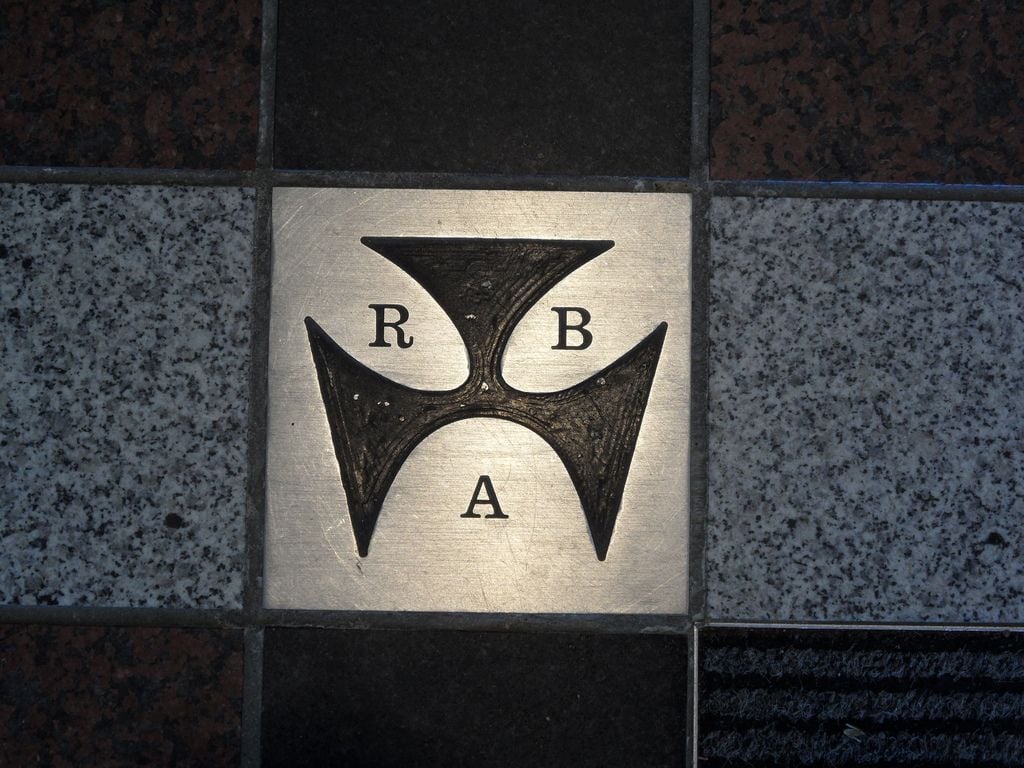
Image © ArchivesACT, Reproduced under CC Licensing, Editorial, Non-Commercial
The Australian Dollar relinquished some of its earlier gains in midweek trade after official data suggested a February softening of inflation that raises the risk of the Reserve Bank of Australia (RBA) leaving its cash rate unchanged next week and could help to support GBP/AUD near recent highs.
Australian Dollars were sold in opening European trade on Wednesday after the Australian Bureau of Statistics said inflation had fallen from 7.4% to 6.8% in February, leaving the annual pace of price growth running below the 7.1% level anticipated by consensus among economists.
"The Monthly CPI Indicator can be very volatile month to month as it is not a true monthly index but rather the released of data from the quarterly CPI as it becomes available," says Justin Smirk, an economist at Westpac.
"Combined the January and February Monthly Indicators represent a significant downside risk to our current forecast," Smirk adds.
Above: Australian Dollar performance against G10 and G20 counterparts on Wednesday. Source: Pound Sterling Live.
Compare GBP to AUD Exchange Rates
Find out how much you could save on your pound to Australian dollar transfer
Potential saving vs high street banks:
A$48.75
Free • No obligation • Takes 2 minutes
Westpac had been looking for inflation of 7.2% when the Australian Bureau of Statistics releases its official quarterly measurement next month but warned on Wednesday that February's outcome makes this forecast unlikely.
Others, however, say the February data provides a misleading reflection of the strength of inflation and still see the Reserve Bank of Australia as likely to raise the cash rate again in its April policy decision next Tuesday.
"The seasonally adjusted result of 0.6% m/m annualises above 7% and the three-month average was up around 2%q/q, pointing to ongoing strong momentum," writes Catherine Birch, a senior economist at ANZ.
"While encouraging, the decline in annual inflation so far doesn’t guarantee that it falls back to target under current policy settings. Indeed NAB’s Business Survey cost and price growth measures have stopped falling over the past few months and are at levels inconsistent with inflation returning to 2-3%," she adds.
Source: ANZ Research. To optimise the timing of international payments you could consider setting a free FX rate alert here.
Wednesday's data suggests the RBA is right in thinking that Australian inflation peaked in the final quarter of last year but it's the timeframe over which price growth returns to the targeted level that matters most for the interest rate outlook, and there are numerous factors that can influence this.
"The RBA will view today’s inflation data in conjunction with the data released earlier on business conditions, the labour market, and retail trade when it meets on Tuesday," says Carol Kong, an economist and currency strategist at Commonwealth Bank of Australia.
"AUD/USD is now back near 0.67. The level near 0.6640 should remain the near-term support for AUD/USD in our view," Kong said on Wednesday.
Reserve Bank of Australia Governor Philp Lowe told the Financial Review Business Summit earlier in March that next week's interest rate decision would depend not only on the strength of inflation in February but also employment, retail sales and the details of recent business surveys.
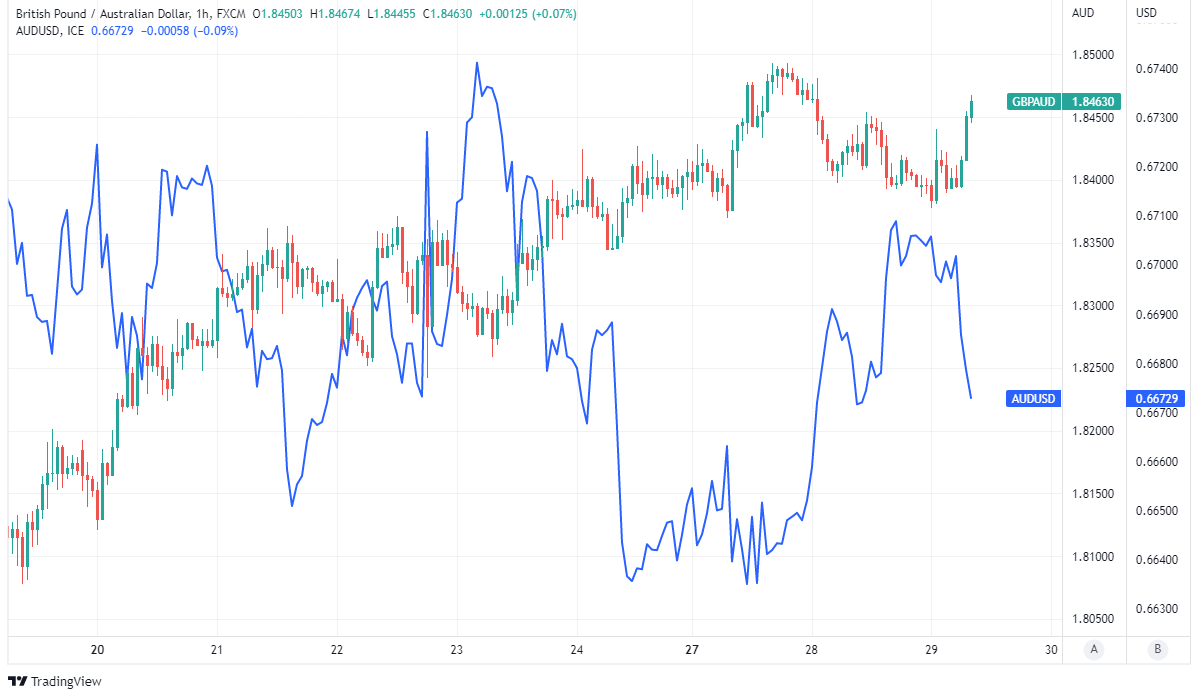 Above: Pound to Australian Dollar rate shown at hourly intervals alongside AUD/USD. Click image for closer inspection. (If you are looking to protect or boost your international payment budget you could consider securing today's rate for use in the future, or set an order for your ideal rate when it is achieved, more information can be found here.)
Above: Pound to Australian Dollar rate shown at hourly intervals alongside AUD/USD. Click image for closer inspection. (If you are looking to protect or boost your international payment budget you could consider securing today's rate for use in the future, or set an order for your ideal rate when it is achieved, more information can be found here.)
While Wednesday's inflation figures did nothing to quibble with financial markets that have recently priced out the prospect of another increase in the cash rate next week, the other data points referenced by the governor have told of a resilient or otherwise robust economy in recent weeks.
"So they’re four really important pieces of data that we’ll look at in our next Board meeting. If collectively they suggest that the right thing is to pause, then we’ll do that; but if they suggest that we need to keep going, then we will do that," Governor Lowe told reporters.
"I agree with you that we want to see inflation back to three per cent by [end of] 2025; extending beyond that I think is getting too long. But to get it back more quickly, we give up jobs, and I don’t think it’s worth it," the governor also said.
All of this leaves open the question of next week's cash rate decision but with financial markets no longer taking another increase as a given, there is potentially scope for the Australian Dollar to benefit from such an outcome.
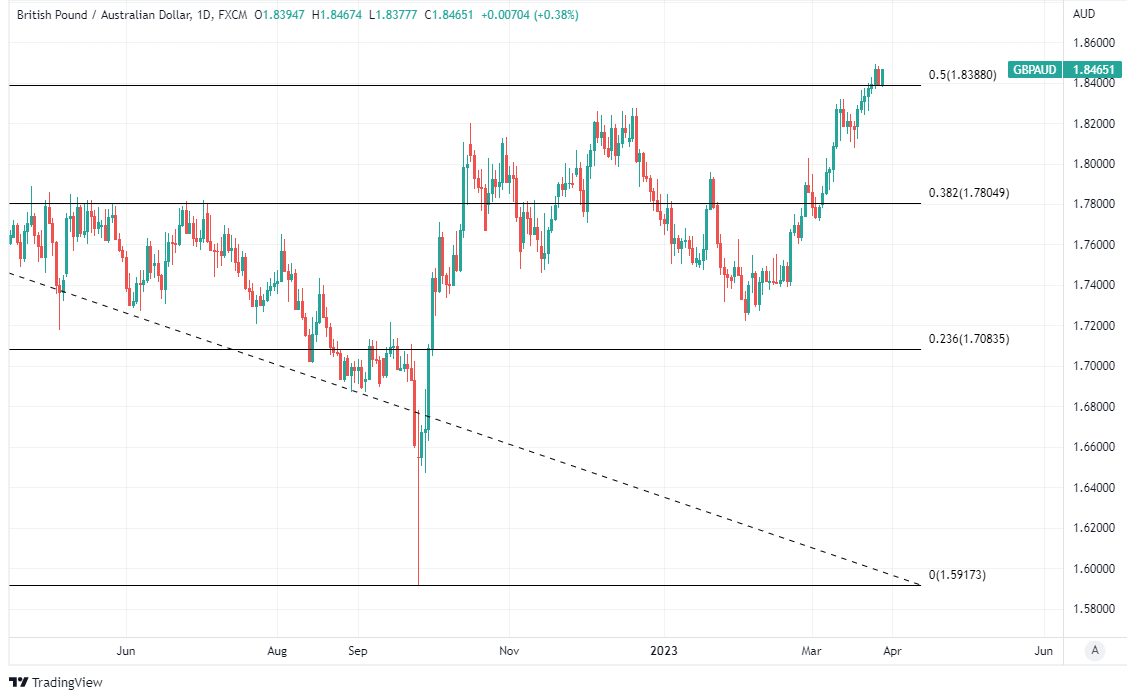 Above: GBP/AUD at daily intervals with selected moving averages indicating possible areas of technical support for Sterling and Fibonacci retracements of 2020 downtrend indicating possible areas of technical resistance.
Above: GBP/AUD at daily intervals with selected moving averages indicating possible areas of technical support for Sterling and Fibonacci retracements of 2020 downtrend indicating possible areas of technical resistance.
Compare GBP to AUD Exchange Rates
Find out how much you could save on your pound to Australian dollar transfer
Potential saving vs high street banks:
A$48.75
Free • No obligation • Takes 2 minutes
So far the RBA has set out to "preserve the gains in the labour market as much as we can," and keep "the economy on an even keel" while using interest rate policy to guide inflation back to within the 2% to 3% target band, which imposes a 2.5% medium-term inflation target.
This inflation target is slightly higher than in other advanced economies and for years before the pandemic, the RBA had struggled to meet it even after multiple interest rate cuts, which is one prospective reason for its slightly more laid-back stance in relation to current levels of inflation.
"The RBA recently flagged five key determinants of the tightening cycle continuing into April – the labour force, the NAB business survey, retail sales, CPI and developments in the global economy," says Andrew Boak, chief economist for Australia and New Zealand at Goldman Sachs.
"We assess the latest newsflow across these factors are net supportive of the RBA continuing to deliver on its explicit tightening bias in April (GS: +25bp) - although we stress that a subsequent hike in May is a very close call (GS: +25bp)," Boak adds.
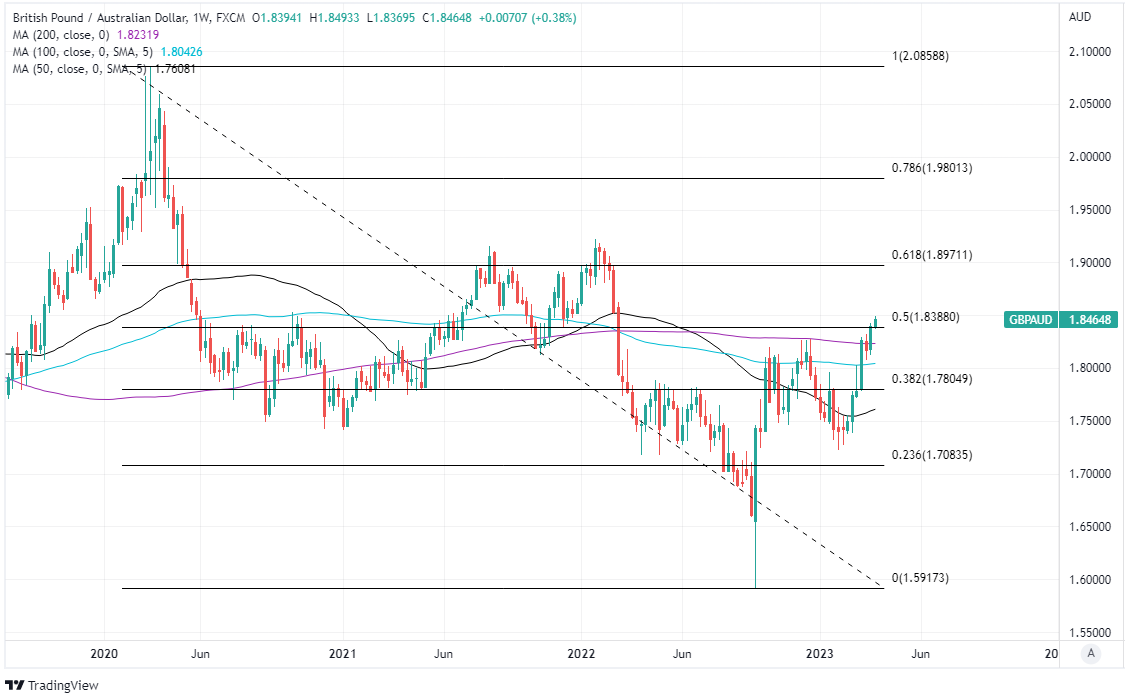 Above: GBP/AUD at weekly intervals with selected moving averages indicating possible areas of technical support for Sterling and Fibonacci retracements of 2020 downtrend indicating possible areas of technical resistance. To optimise the timing of international payments you could consider setting a free FX rate alert here.
Above: GBP/AUD at weekly intervals with selected moving averages indicating possible areas of technical support for Sterling and Fibonacci retracements of 2020 downtrend indicating possible areas of technical resistance. To optimise the timing of international payments you could consider setting a free FX rate alert here.

